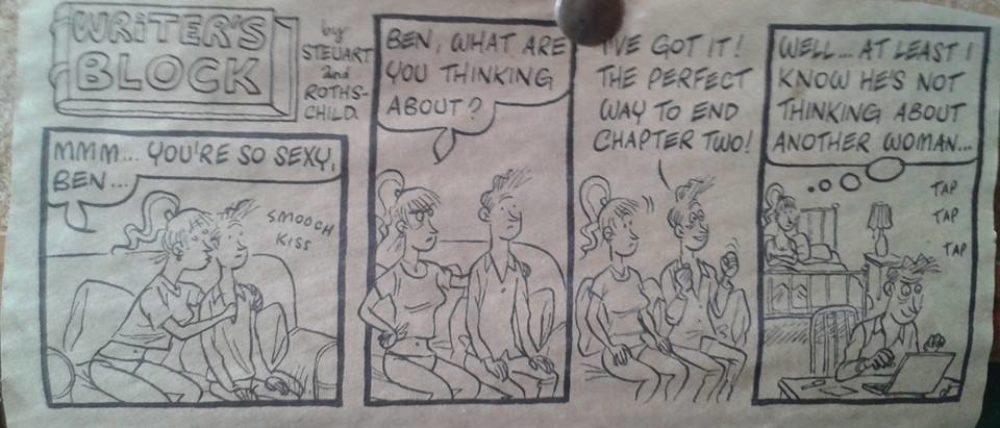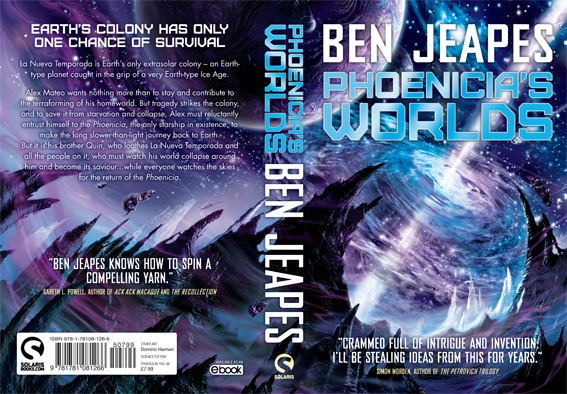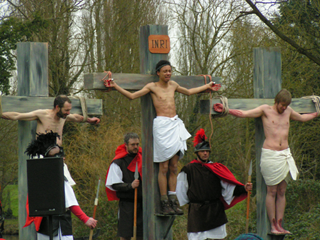From 2000-2003 I ran my own science fiction publishing company, Big Engine. I forget when exactly in 2003 it folded: it must have been before Easter, because I remember being able to go to Eastercon and it was already a fait accompli. A grateful Rog Peyton added the table I had booked in the dealers’ room to his own.
So, ten years later and in four parts, here is the first official history of Big Engine. Abridged.
I’d always expected that if I ran my own company then it would be a publishing company: that was all I had ever worked in. I had also expected that there would be a planning period, a run-up of several years. I hadn’t expected to be cast out into the wilderness quite so suddenly as I was in the first week of January 2000.
There was also the minor matter of knowing what I was going to publish. For all my love of science fiction, I really didn’t expect to end up publishing it. I had expected that my hypothetical company would find a niche in some non-fiction field, selling to professionals who actively need your books (or can be persuaded that they do) and can quite often buy them out of their departmental budget. I did consider military history as there were two books that immediately came to mind for reprinting: my own father’s SAS: Operation Oman, and The Log of the Centurion, the story of a distant relative who circumnavigated the globe with Commodore Anson on HMS Centurion.
I wasn’t strapped for cash; I had my two months’ pay in lieu of notice, I had a bit put away in savings and Wingèd Chariot was shortly to be published, releasing the final instalment of my advance. But I still had to be doing something, and doing it quick. So I went with what I knew best, which was science fiction.
And the name of the company? In an email to a friend, discussing the company, I finished with the line “I can do it, I can do it,” quoting Gordon the Big Engine as he pulled an unexpectedly heavy line of carriages – or was it naughty trucks? – up a steep hill.
So, Big Engine it was.
I wanted to do reprints: that had been at the back of my mind ever since falling in love with Brian Stableford’s Hooded Swan series, and having to track it down, book by book and out of order, in those pre-eBay or abe.com days. And guess what: the Hooded Swan series appeared in a single volume, as Big Engine’s fourth title, launched at the 2002 Eastercon in St Helier where Brian Stableford was Guest of Honour, and titled (inevitably) Swan Songs.
I also wanted to publish original fiction. I reckoned that even if I didn’t make new authors famous, I could at least get a book out with their name on, and get it in front of reviewers, and give them something to show for their effort. Because I had helped critique them through my writers’ group, 3SF, I immediately knew two very good novels that were languishing for want of a publisher: Feather & Bone by Gus Smith (CJD, child abuse, cannibalism and skinny dipping lesbian witches on the Northumbrian moors) and Dead Ground by Chris Amies (HP Lovecraft in the South Pacific: sun, sea and imperial decline merging seamlessly into the much darker forces at work). [Both, incidentally, to be republished shortly by Clarion Publishing.]
And short story collections – don’t forget those. Molly Brown had a good portfolio of published work, which came out as my second title, Bad Timing; and when I contacted David Pringle at Interzone to ask how to get in touch with Brian Stableford he offered me a collection of Interzone stories that had fallen through with a previous publisher. This was published as The Ant-Men of Tibet & Other Stories. He even offered to put one of my own stories into the collection but I declined; I thought it best not to get my own writing and Big Engine confused.
But for my launch title there could only be one: David Langford’s The Leaky Establishment, which I had read at university and had been long been out of print.
I think Dave was the first of the reprint authors that I contacted. He put me in touch with his agent, Christopher Priest, who was very helpful in this and many other ways over the next couple of years, and the contract he provided for this book was to be the model I used for all the others.
When I asked Dave if I could publish Leaky, it turned out he had just finished getting it scanned onto disk so that it could be published in the US as an e-book. He kindly pulled it from that project and let me have it. He also dropped a mention that a big fan of the book and fellow veteran of the nuclear industry, one Terry Pratchett, had kindly offered to write an introduction if it would help get the book back in print. Was I interested?
Well, what do you think?
Leaky – quite possibly because of the Pratchett connection – was my best-selling title.
Big Engine’s first public appearance was in the form of leaflets scattered at Eastercon 2000 in Glasgow. This was my first Eastercon – I’d always been able to think of better things to do with my Easters, previously – and unfortunately one of the worst-run ones in recent memory. I had nothing to compare it with so assumed the rampant mismanagement was normal. I handed out/dropped flyers and sample chapters and generally did what I could to raise awareness and interest – which wasn’t much, given my usual shyness and a sudden, crashing awareness of exactly what I was taking on.
I got my very first order! It was for Leaky and it was from a Swedish gentleman, whose credit card had expired by the time I actually got round to publishing the book a year later. But he was quick to give me the new number and so he became my very first customer.
I generated enough interest that I soon had a launch list of twelve titles. Twelve titles, twelve months in a year … I know, why not do a “founder member” offer: get people to give me money up front and receive a book a month for a year at less than their cover price? Actually that would have been disastrous and sunk me almost immediately. As it was I got the first eleven published over a two year period – still ambitious but, frankly, something I’m also proud of.
Books need printing.
The grand plan was all very well but if the books couldn’t be printed affordably then it would all come to nothing. In principle you can charge what cover price you like to pay for a book’s production, but if it’s beyond what a reader thinks is a reasonable price for the book in hand then they simply won’t be bought.
Nowadays any good printer will offer a short run digital print service. It was less common in 2000. A pioneer of this in the UK was Lightning Source. This was the first time I heard of print-on-demand and I was immensely sceptical at first, but couldn’t argue with the evidence of my own eyes. It really was possible to print short runs of books, even one book at a time, that looked just like a ‘real’ book.
For a slightly higher unit cost …
(With POD, in principle a book never needs to go out of print, but that raises a contractual issue that Christopher Priest brought to my attention. Its ancient wisdom now but was counter-intuitive and revolutionary back then: an author might actually want the book to go out of print so that rights can revert to him rather than be retained, dog-in-the-manger, by the publisher. Thus, Big Engine contracts all included a time limit clause.)
But, as I was to discover, POD is fine for keeping titles in print but it isn’t for a new publisher launching new titles. Lightning Source were the initial printers of my first books – as well as individual copies, they also did runs of however many hundred copies I wanted, and of course I wanted multiple copies for promotion. But POD has (or had) no economies of scale: unit costs were identical whether you printed one book or 1000, and those unit costs were higher than for a normal print run. This is fine if you want to charge a lot but not if you want the price to be as reader-friendly as possible.
For publicity purposes, you need copies of books that you can just give away to reviewers, and you would normally do that by having a run of books sufficiently large that the unit costs are negligible. The sales that you manage should pay for the entire run.
But with POD, every free publicity copy is a loss, because every copy is paid for in the same way. So, although POD enabled me to get started with Big Engine, I was soon printing books conventionally with short print runs (typically 200-400). The idea was that with the initial publicity and sales drive out of the way, I would shunt the book over to POD for further sales.
I also found some incredible hang-ups about the whole POD thing which made the authors nervous. The urban myths were maintained with a near-superstitious dread. “POD books come apart in the sunlight,” I was told – um, no. “Amazon won’t stock POD” – well, they have their faults, but that wasn’t one of them.
I lost a pretty big name author who was torn between offers from me and Golden Gryphon, and went for the latter “because I will get a print run.” Which he would have got if he’d chosen me, too.
There were also, let’s say, operational difficulties with Lightning Source. At the time they had an office in Milton Keynes but no actual printing equipment; their books were printed in the US and shipped over. And for some reason – maybe because we were using UK book sizes, which confused the Americans – they seemed unable to print the books right. First they printed Leaky a size too small, so that everything was off-centre and all you could see of the Big Engine logo on the front cover was the wheels of the steam train. (Dave kindly announced that he would not refer to the company as Big Bogies.) Despite immediately correcting that and apologising, they did exactly the same for my second title, Bad Timing. For my grand launch at Eastercon 2001, I therefore had piles of (finally) correctly sized Leakys, one badly sized copy of Bad Timing to show that it did at least exist in some form, and laser proofs of that and The Ant-Men of Tibet. I had been hoping for all three in sellable form.
These errors were all promptly corrected at the right size at no further cost to me, but I felt like I was pulling teeth every time I went about the very simple process of getting a book published.
Fortunately that was just an operational hiccup, and once Lightning Source’s UK operation was running there were no further problems there. In fact, a reprint of Leaky was the very first title to run off their presses and it was framed in their office when I last visited.
Eastercon 2001 was Big Engine’s first big public outing with tangible products rather than promises and it made a considerable amount of money, mostly through the founder member offer. It was a highly profitable weekend and I took great pleasure from banking the proceeds. I ignored the small voice at the back of my mind pointing out that I would need a weekend like that every weekend of the year to stay solvent…
To be continued!








